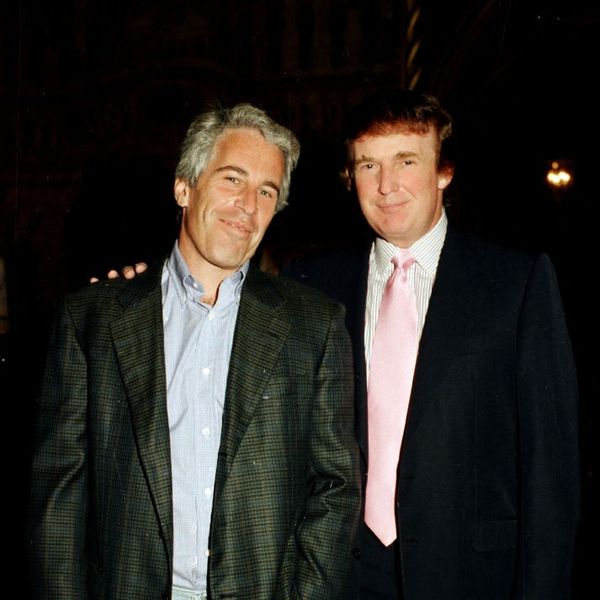People Get Ready: 'Unprecedented' Weather Glimpses Century Ahead
Latest report from WMO says first decade of century was hottest, wettest on record with more to come

That's the assessment contained in the World Meteorological Organization's latest report, The Global Climate 2001-2010, A Decade of Climate Extremes, which examined the first decade of the 21st century. The report, released Wednesday, arrived with this warning: we better get ready for more.
"Carbon-dioxide concentration [...] reached an average global value of 389 parts per million by the end of the decade, the highest value recorded for at least the past 10,000 years."
"Rising concentrations of heat-trapping greenhouse gases are changing our climate, with far reaching implications for our environment and our oceans, which are absorbing both carbon dioxide and heat," said WMO Secretary-General Michel Jarraud.
The decade between 2001 and 2010, according to the report, was both the hottest and the wettest since modern records were started in 1850.
According to the report, "Carbon-dioxide concentration [...] reached an average global value of 389 parts per million by the end of the decade, the highest value recorded for at least the past 10,000 years."
The group, which takes a global look at weather events and their relationship to macro trends in atmospheric and ocean patterns, says looking at a complete decade of data is the best way to make accurate analysis of a climate system as complex as the Earth's.
"A decade is the minimum possible timeframe for meaningful assessments of climate change," said Jarraud. "WMO's report shows that global warming was significant from 1971 to 2010 and that the decadal rate of increase between 1991-2000 and 2001-2010 was unprecedented."
On an annual basis, he continued, regional and global trends may go up and down, but on a "long-term basis the underlying trend is clearly in an upward direction."
The WHO also released this video summary of their report:
___________________________
An Urgent Message From Our Co-Founder
Dear Common Dreams reader, The U.S. is on a fast track to authoritarianism like nothing I've ever seen. Meanwhile, corporate news outlets are utterly capitulating to Trump, twisting their coverage to avoid drawing his ire while lining up to stuff cash in his pockets. That's why I believe that Common Dreams is doing the best and most consequential reporting that we've ever done. Our small but mighty team is a progressive reporting powerhouse, covering the news every day that the corporate media never will. Our mission has always been simple: To inform. To inspire. And to ignite change for the common good. Now here's the key piece that I want all our readers to understand: None of this would be possible without your financial support. That's not just some fundraising cliche. It's the absolute and literal truth. We don't accept corporate advertising and never will. We don't have a paywall because we don't think people should be blocked from critical news based on their ability to pay. Everything we do is funded by the donations of readers like you. Will you donate now to help power the nonprofit, independent reporting of Common Dreams? Thank you for being a vital member of our community. Together, we can keep independent journalism alive when it’s needed most. - Craig Brown, Co-founder |

That's the assessment contained in the World Meteorological Organization's latest report, The Global Climate 2001-2010, A Decade of Climate Extremes, which examined the first decade of the 21st century. The report, released Wednesday, arrived with this warning: we better get ready for more.
"Carbon-dioxide concentration [...] reached an average global value of 389 parts per million by the end of the decade, the highest value recorded for at least the past 10,000 years."
"Rising concentrations of heat-trapping greenhouse gases are changing our climate, with far reaching implications for our environment and our oceans, which are absorbing both carbon dioxide and heat," said WMO Secretary-General Michel Jarraud.
The decade between 2001 and 2010, according to the report, was both the hottest and the wettest since modern records were started in 1850.
According to the report, "Carbon-dioxide concentration [...] reached an average global value of 389 parts per million by the end of the decade, the highest value recorded for at least the past 10,000 years."
The group, which takes a global look at weather events and their relationship to macro trends in atmospheric and ocean patterns, says looking at a complete decade of data is the best way to make accurate analysis of a climate system as complex as the Earth's.
"A decade is the minimum possible timeframe for meaningful assessments of climate change," said Jarraud. "WMO's report shows that global warming was significant from 1971 to 2010 and that the decadal rate of increase between 1991-2000 and 2001-2010 was unprecedented."
On an annual basis, he continued, regional and global trends may go up and down, but on a "long-term basis the underlying trend is clearly in an upward direction."
The WHO also released this video summary of their report:
___________________________

That's the assessment contained in the World Meteorological Organization's latest report, The Global Climate 2001-2010, A Decade of Climate Extremes, which examined the first decade of the 21st century. The report, released Wednesday, arrived with this warning: we better get ready for more.
"Carbon-dioxide concentration [...] reached an average global value of 389 parts per million by the end of the decade, the highest value recorded for at least the past 10,000 years."
"Rising concentrations of heat-trapping greenhouse gases are changing our climate, with far reaching implications for our environment and our oceans, which are absorbing both carbon dioxide and heat," said WMO Secretary-General Michel Jarraud.
The decade between 2001 and 2010, according to the report, was both the hottest and the wettest since modern records were started in 1850.
According to the report, "Carbon-dioxide concentration [...] reached an average global value of 389 parts per million by the end of the decade, the highest value recorded for at least the past 10,000 years."
The group, which takes a global look at weather events and their relationship to macro trends in atmospheric and ocean patterns, says looking at a complete decade of data is the best way to make accurate analysis of a climate system as complex as the Earth's.
"A decade is the minimum possible timeframe for meaningful assessments of climate change," said Jarraud. "WMO's report shows that global warming was significant from 1971 to 2010 and that the decadal rate of increase between 1991-2000 and 2001-2010 was unprecedented."
On an annual basis, he continued, regional and global trends may go up and down, but on a "long-term basis the underlying trend is clearly in an upward direction."
The WHO also released this video summary of their report:
___________________________

